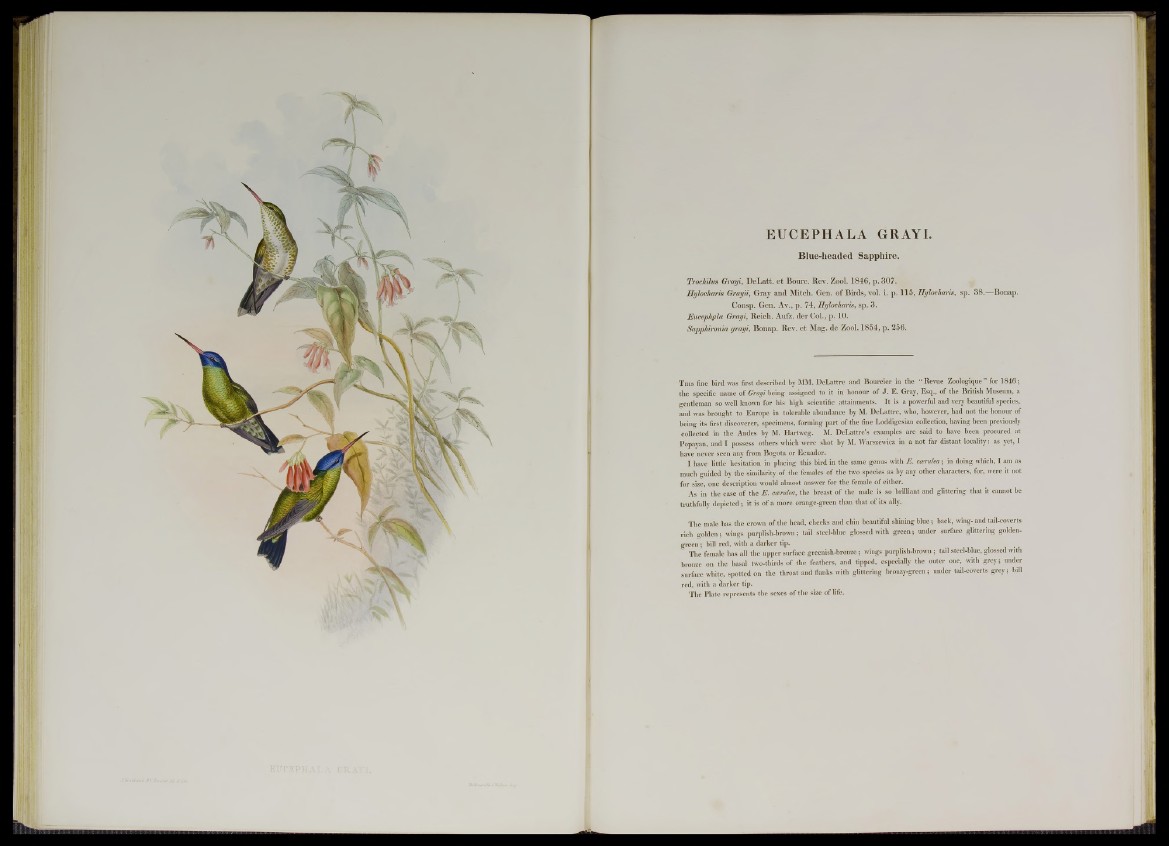
EUCEPHALA GRAYI.
Blue-headed Sapphire.
TrochUus Grayi, DeL a tt. e t Bourc. Rev. Zool. 1846, p. 307.
Hylocharis Grayii, Gray an d Mitch. Gen. o f B irds, vol. i. p. 115, Hylocharis, sp. 38.—Bonap.
Consp. Gen. Av., p . 74, Hylocharis, sp. 3.
Eueephtda Grayi, Reich. Auiz. der Col., p. 10.
Sapphironia grayi, Bonap. Rev. e t Mag. de Zool. 1854, p. 256.
T his fine bird was first described by MM. DeLattre and Bourcier in the “ Revue Zoologique” for 1 8 4 6 ;
the specific name of Grayi being assigned to it in honour of J . E. Gray, Esq., of the British Museum, a
gentleman so well known for his high scientific attainments. It is a powerful and very beautiful species,
and was brought to Europe in tolerable abundance by M. DeLattre, who, however, had not the honour of
being its first discoverer, specimens, forming part of the fine Loddigesian collection, having heen previously
collected in the Andes by M. Hartweg. M. DeLattre’s examples are said to have been procured at
Popayan, and I possess others which were shot by M. Warszewicz in a not far distant locality: as yet, I
have never seen any from Bogota or Ecuador.
I have little hesitation in placing this bird in the same genus with E. ceemlea; in doing which, I am as
much guided by the similarity of the females of the two species as by any other characters, for, were it not
for size, one description would almost answer for the female of either.
As in the case of the E. aerulea, the breast of the male is so brilliant and glittering that it cannot be
truthfully depicted; it is of a more orange-green than that of its ally.
The male has the crown of the head, cheeks and chin beautiful shining blue; back, wing- and tail-coverts
rich golden; wings purplish-brown; tail steel-blue glossed with green; under surface glittering golden-
green; bill red, with a darker tip.
The female has all the upper surface greenish-bronze; wings purplish-brown; tail steel-blue, glossed with
bronze on the basal two-thirds of the feathers, and tipped, especially the outer one, with grey; under
surface white, spotted on the throat and flanks with glittering bronzy-green; under tail-coverts grey; bill
red, with a darker tip.
The Plate represents the sexes of the size of life.